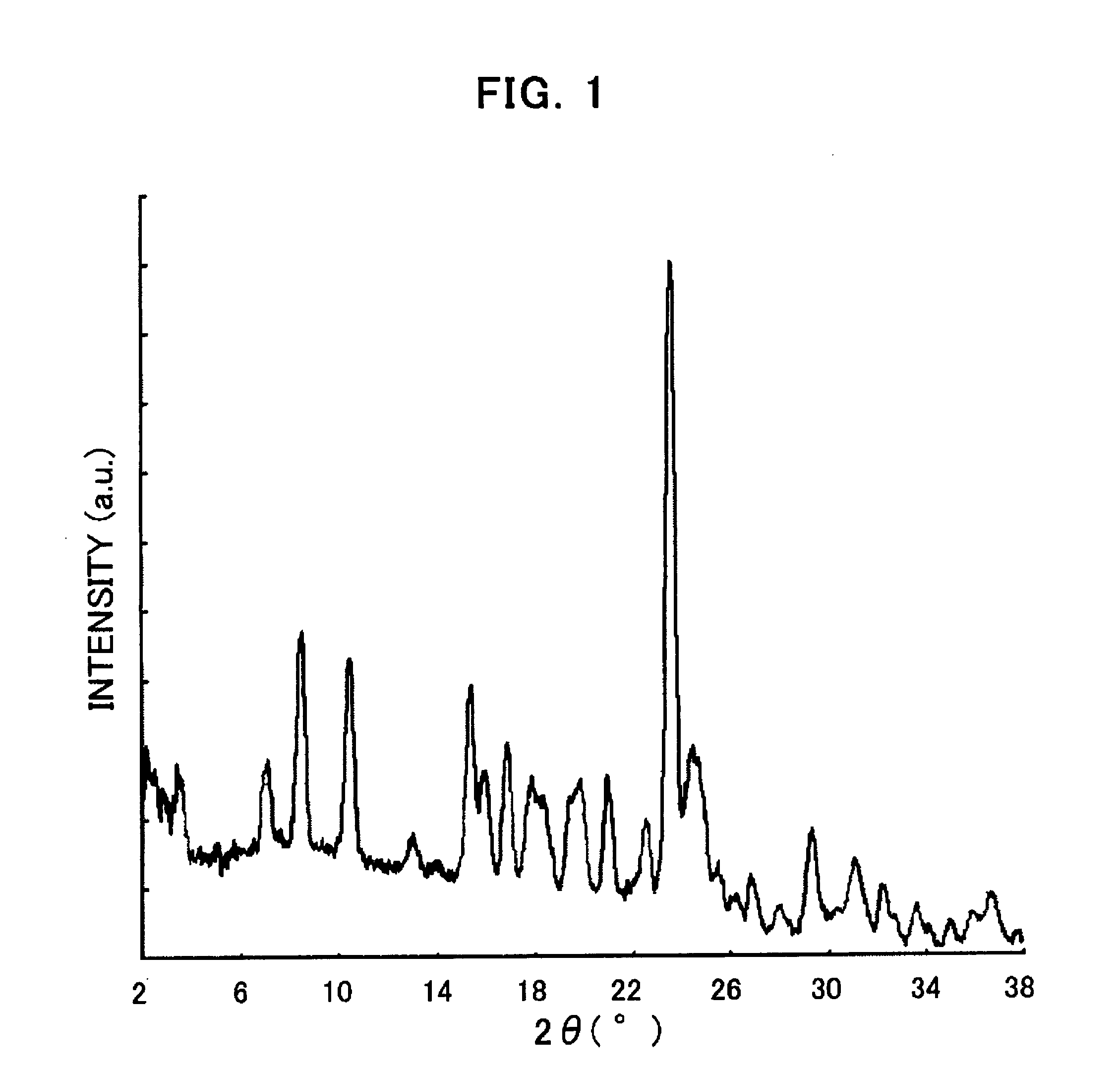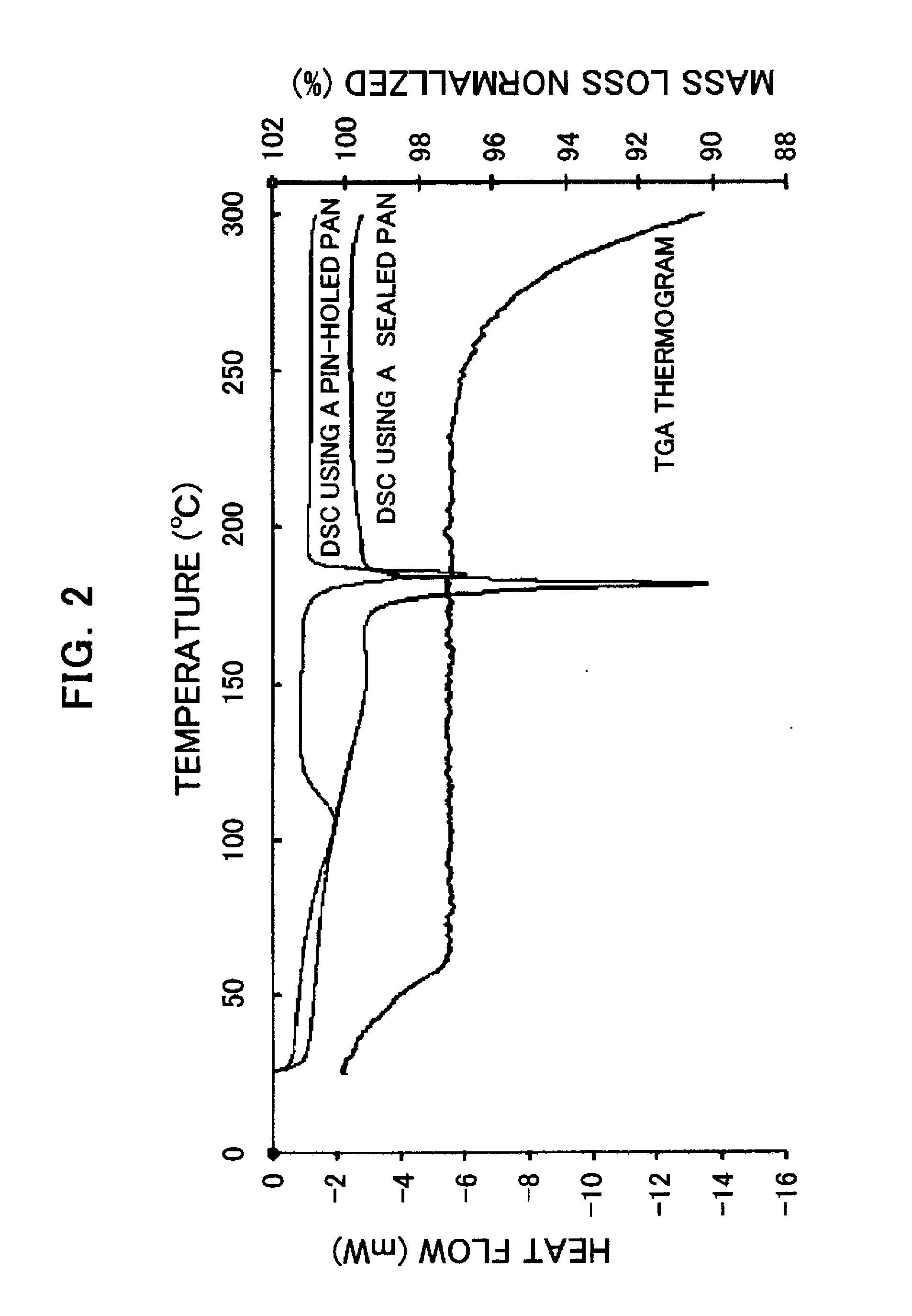Crystals of phenylalanine derivatives, production method thereof and use thereof
- Summary
- Abstract
- Description
- Claims
- Application Information
AI Technical Summary
Benefits of technology
Problems solved by technology
Method used
Image
Examples
referential example 1
Synthesis of the Compound (Free Form) of the Formula (I)
Process 1: Synthesis of isopropyl ester of 4-nitro-N-(2,6-dichlorobenzoyl)-L-phenylalanine
[0163] Isopropanol (130 mL), tetrahydrofuran (50 mL) and a sulfuric acid (0.44 mL) were added to 4-nitro-N-(2,6-dichlorobenzoyl)-L-phenylalanine (Patent Literature 3: WO2004 / 074264) (2.95 g, 7.70 mmol) and stirred at 50° C. for 5 days. After removing the solvent under reduced pressure, the obtained solid substance was washed with water and dried to obtain the title compound (3.28 g).
[0164] MS (ESI) m / z 425 (MH+)
Process 2: Synthesis of isopropyl ester of 4-amino-N-(2,6-dichlorobenzoyl)-L-phenylalanine (Namely, Synthesis of isopropyl ester of (S)-2-(2,6-dichlorobenzoylamino)-3-(4-aminophenyl) propionic acid
[0165] Isopropanol (6 mL), tetrahydrofuran (3 mL) and 3% Pt-S / C (20 mg) were added to the compound obtained in Process 1 (98 mg) and stirred under hydrogen atmosphere at room temperature overnight. After filtering the reaction solutio...
referential example 2
Synthesis of the Compound of the Formula (II) (TFA Salt)
[0182] A 4N hydrogen chloride-dioxane solution (15 mL) and water (3 mL) were added to the compound (I) obtained in the referential example 1 (500 mg, 0.838 mmol), and stirred at 90° C. for 3 hours. After removing the solvent, the reactant was purified with high-speed liquid chromatography (water / acetonitrile, each containing 0.1% TFA) to obtain the intended compound (330 mg).
[0183] MS (ESI MH+): 555
[0184]1H-NMR (DMSO-d6) δ 2.58 (3H, t, J=5.1 Hz), 2.98 (1H, dd, J=14.1, 10.5 Hz), 3.24 (1H, dd, J=14.1, 4.5 Hz), 3.55 (3H, s), 4.22-4.28 (1H, m), 4.61-4.80 (1H, m), 7.20 (2H, d, J=8.4 Hz), 7.39-7.46 (5H, m), 7.60 (1H, d, J=9.0 Hz), 7.88 (1H, d, J=6.9 Hz), 8.24 (1H, d, J=1.5 Hz), 8.80 (2H, brs), 9.15 (1H, d, J=8.7 Hz), 12.90 (1H, brs)
example 1
Preparation of Crystal Form A
Process 1
[0204] The compound (free form) of the formula (I) prepared in the referential example was dissolved in tetrahydrofuran (THF), and the solvent was removed under reduced pressure to obtain amorphia of the compound (I).
Process 2
[0205] 3 mg of the compound (I) obtained in Process 1 was added to 40 μL of dimethylformamide and heated up to 60° C. Then, the reactant was quickly cooled down to 5° C. (at a cooling rate of 30° C. / hour), aged at the same temperature for about 24 hours, and then the precipitated crystal was collected. The obtained crystal was in the form of a hydrate. FIG. 1 shows the powder X-ray diffraction pattern thereof.
PUM
| Property | Measurement | Unit |
|---|---|---|
| Temperature | aaaaa | aaaaa |
| Angle | aaaaa | aaaaa |
| Adhesion strength | aaaaa | aaaaa |
Abstract
Description
Claims
Application Information
 Login to View More
Login to View More - R&D
- Intellectual Property
- Life Sciences
- Materials
- Tech Scout
- Unparalleled Data Quality
- Higher Quality Content
- 60% Fewer Hallucinations
Browse by: Latest US Patents, China's latest patents, Technical Efficacy Thesaurus, Application Domain, Technology Topic, Popular Technical Reports.
© 2025 PatSnap. All rights reserved.Legal|Privacy policy|Modern Slavery Act Transparency Statement|Sitemap|About US| Contact US: help@patsnap.com



